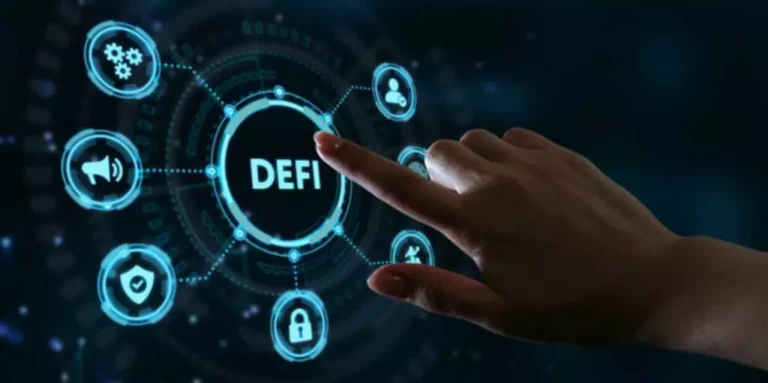High Blockchain Attacks, Hacks And Security Issues Defined

One can simply detect the information has been tampered with, for the explanation that hash pointer of root node does not match with the hash pointer that has been stored. As components, algorithms and uses for blockchain proceed to evolve, so too will assault tactics and menace mitigation techniques. Here are six components which have created points for the blockchain safety panorama.
Because once all of the transactions relevant to a user may be linked, it is easy to infer other information about the consumer, such because the account balance, and the sort and frequency of her transactions. Using such statistical information about transactions and accounts along side some background knowledge a couple of person, curious or adversarial events may guess (infer) the true identity of the person with high confidence. The difficulty of efficient and secure sharing of user data amongst varied financial establishments might end in a high cost of repeated consumer authentication.
From blockchain-specific assaults to human vulnerabilities to lack of rules, these are the highest blockchain points. In right now’s digital world it’s essential to take steps to ensure the security of each your blockchain design and setting. When Bithumb, one of many largest Ethereum and bitcoin cryptocurrency exchanges, was just lately hacked, the hackers compromised 30,000 users’ data and stole USD 870,000 worth of bitcoin.
How Secure Is Blockchain Technology?
One method utilized by attackers is to infect a user’s computer with malware designed to steal wallet keys or perform unauthorized transactions. This could be as delicate as malware detecting when a cryptocurrency handle is copied, and substituting that tackle with a bad actor’s wallet tackle when pasted. Layer2 vulnerabilities While most of the similar basic blockchain vulnerabilities apply, there are some considerations distinctive to L2s including the potential for transaction censoring from rollup providers and DoS and malware assaults targeting rollup providers. Blockchain network congestion This occurs when there are not sufficient validators to verify the amount of proposed transactions, resulting in delays in transaction processing and a rise in charges.

Another advantage of DLT is that endpoint vulnerabilities are addressed in layer 2 (off-chain solutions) within the DLT.
DLT will increase cyberresiliency as a result of it creates a situation the place there is no single level of contact. In the DLT, an assault on one or a small number of participants
The Human Danger Factor
However, to make use of blockchain for secure distributed storage, additional safety and privateness properties are required. Table 2 summarizes the set of primary and additional safety and privacy properties that have to be ensured for meeting the corresponding necessities outlined in Section 3.1. In the higher part, we show the set of the security and privateness necessities that may be guaranteed by the security and privateness properties and the strategies provided within the authentic blockchain system, i.e., Bitcoin. In the decrease part, we present the security and privacy requirements and properties that must be strengthened by some additional safety and privateness properties and techniques.

Bridge attacks Blockchain bridges are tools that join and permit seamless switch of assets between totally different blockchain networks, enhancing the decentralized finance (DeFi) ecosystem. Because bridges store blockchain trends a large amount of property and are less safe than the blockchains themselves, they’re a beautiful target to hackers.
Personal (and Permissioned) Blockchains
Blockchain expertise is a latest breakthrough of secure computing without centralized authority in an open networked system. From a knowledge management perspective, a blockchain is a distributed database that logs an evolving list of transaction records by organizing them right into a hierarchical chain of blocks. From a safety perspective, the block chain is created and maintained using a peer to peer overlay community and secured through intelligent and decentralized utilization of cryptography with crowd computing. Although non-public blockchains may not benefit as a lot from the decentralized and security-by-numbers strategy of public blockchains, they are generally quicker and more environment friendly because of less computational work required for consensus algorithms. However, as a end result of the entity granting permission also has authority over the network, there’s a theoretical danger of the network being shut down or manipulated, a safety risk that’s not usually present in public blockchains.
- Endpoint vulnerabilities are also entry points for malicious actors, corresponding to those on the device, app, wallet or third-party vendor stage.
- counsel should then have a glance at a blockchain
- Blockchain networks can differ in who can take part and who has entry to the information.
- Of course, blockchain technologies can differ, particularly when it involves who can entry the info in every block.
- In a blockchain, knowledge for one or more new transactions is bundled right into a block.
- In contrast, the eventual consistency mannequin signifies that the blockchain at each node of the system gets constant finally, although some read/write requests to the blockchain could return stale information.
They ought to follow typically accepted cybersecurity practices on the blockchain purposes. Perhaps the most complicated touchpoints between blockchains and the true world are “smart contracts,” that are pc programs stored in certain kinds of blockchain that may automate transactions. Finally, irrespective of how tamperproof a blockchain protocol is, it “does not exist in a vacuum,” says Sirer. The cryptocurrency hacks driving latest headlines are normally failures at places where blockchain systems join with the actual world—for example, in software program purchasers and third-party functions.
Totally Different Kinds Of Blockchains To Know
emerged for the explanation that first software of blockchain (e.g., cryptocurrency). The decentralized functions
Also, safety within the DLT is elevated as a outcome of the participants are preselected. Although core blockchain applied sciences are typically abstracted from end-user view, the interfaces for interacting with purposes, crypto assets or related identification administration methods are just as much targets for bad actors. Phishing, for instance, can allow risk actors to steal non-public keys or enter an enterprise network — an upstream tactic that still threatens blockchain-powered belongings or interactions. The fingerprint, known as a hash, takes lots of computing time and vitality to generate initially. It thus serves as proof that the miner who added the block to the blockchain did the computational work to earn a bitcoin reward (for this reason, Bitcoin is alleged to use a “proof-of-work” protocol).
Similar to the Bitcoin system, Enigma offers autonomous control and safety of personal knowledge while eliminating the need and dependency of a trusted third party. Such privacy leakage can result in breaching the confidentiality of transaction info. Thus, confidentiality and privacy pose a major challenge for blockchain and its applications that involve sensitive transactions and personal knowledge. We will dedicate Section 5 to discuss some primary branches of know-how which will help enhancing information privacy and transaction confidentiality on blockchain. For the first type of tampering, a miner could try to change the payee handle of the transaction to himself.
A new block can be accepted by the network after being validated via mining. Miners can select to mine any unverified blocks on the network by fixing a puzzle, and compete with each other until a winner emerges. If a miner is the first to discover a hash that matches the current target, it broadcasts the block throughout the community to each node. Once the block passes the verification, every node provides this block to their very own copy of the ledger.
Group signature is a cryptography scheme proposed initially in 1991 [27]. The strategy of signature verification reveals nothing about true id of the signer except the membership of the group. CoinShuffle [79] was proposed by Tim Ruffing et al. in 2014, which additional extends the CoinJoin concept and increases privacy by avoiding the need of a trusted third-party for mixing transactions.








